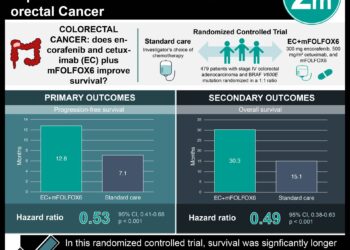2 Minute Medicine Rewind August 25 – September 1, 2014
In this section, we highlight the key high-impact studies, updates, and analyses published in medicine during the past week.
Adequate blood pressure control remains a challenge for many patients, and the estimated proportion of adults with treatment-eligible hypertension in the US who meet blood pressure goals is less than half for younger adults and less than two thirds for older adults. There have been studies showing promise of self-monitoring and self-adjustment of blood pressure medications; however, these studies have not been replicated in patients who are in the higher risk groups for cardiovascular disease, such as patients with pre-existing cardiovascular disease, diabetes, or chronic kidney disease. This randomized un-blinded clinical trial in the UK enrolled 552 patients with a history of stroke, coronary heart disease, diabetes and chronic kidney disease with blood pressure measurements above 130/80 mm Hg. Patients were assigned to the self-monitoring blood pressure group, where they followed an individualized self-titration algorithm, and the control group, where they received usual care by seeing their primary care physicians and adjusting their medications at their routine visits. The primary outcome studied was the difference in systolic blood pressure measurements between the intervention and control groups at 12 months. Mean blood pressures at the start of the experiment were 143.1/80.5 and 143.6/79.5 mm Hg in intervention and control groups, respectively. After 12 months, the mean blood pressures were 128.2/73.8 and 137.8/76.3 mm Hg in the intervention and control groups, respectively. The difference between groups at 12 months was 9.2 mm Hg (95% CI: 5.7-12.7) in systolic and 3.4 mm Hg (95% CI: 1.8-5.0) in diastolic measurements. This trial thus demonstrates the benefits of self-monitoring and self-titrating of blood pressure medications even in the patients at a high risk of cardiovascular disease.
Transmission of MERS-Coronavirus in Household Contacts
Between 2012 and 2014, an estimate of 834 confirmed cases of MERS-CoV co-infections were reported to the World Health Organization, with 288 of these cases resulting in death. To date, no data has been collected on the rate of silent or subclinical secondary infections after exposure to the primary cases of MERS-CoV. This cross sectional study enrolled 26 “index” patients, who were confirmed to be infected with the virus and displayed symptoms, and 280 household contacts of these “index” patients, who were defined as people living in the same household, regardless of the degree of relation to the target patient. Household contacts were tested in the range of 5 to 216 days (mean of 34.4 days) following the symptom onset in the “index” patient. The endpoint of this study was the number of cases of secondary transmission, defined on the basis of reactivity in reverse transcriptase PCR reactions from the throat swabs or reactivity on enzyme linked immunosorbent assay against the viral antigen, confirmed by two additional tests for seropositivity. The study showed that the rate of secondary transmission was estimated to be 4% (95% CI: 2 to 7%), with 5 cases of transmission identified by serological analysis, and 7 identified by the means of RT-PCR.
Collaborative Care for Adolescents with Depression in Primary Care
In the 2001-2004 US National Comorbidity Survey, the rate of mood disorders in young adults ages 13-18 was estimated at 14%, with 60% of these patients receiving treatment. Although there is evidence that collaborative care approach is helpful in treatment of depression in adults, no definitive data exists for adolescents. In this randomized trial across nine clinics in Washington State, 101 adolescents were enrolled. Eligibility was determined by the score of 10 or higher on a full Patient Health Questionnaire – 9 (PHQ-9) as well as meeting the criteria for major depression on the Kiddie-Structured Interview for Affective Disorders and Schizophrenia or a second positive full PHQ-9 with a Child Depression Rating Scale-Revised (CDRS-R) score of 42 or greater, English proficiency, lack of suicidal plan or attempt, lack of bipolar disorder, lack of drug or alcohol abuse, lack of established care with psychiatry and lack of developmental delay. Patients were randomized to intervention group, receiving an initial in-person engagement session followed by regular follow-up sessions, vs a control group, receiving the initial depression screen followed by access to mental health services. The primary outcome studied was the change in symptoms of depression at 12 months. Young adults in the intervention group were shown to have greater decreases in Child Depression Rating Scale – Revised (CDRS-R) compared to patients in control group. The difference in improvement on the Columbia Impairment Scale score (CIS) was not statistically significant. Intervention group was more likely than control group to achieve depression response (67.6 % vs 38.6%, OR 3.3, 95% CI: 1.4-8.2 p=0.009) and remission (50.4% vs 20.7%, OR 3.9, 95% CI 1.5-10.6 p=0.007) at 12 months, suggesting that collaborative care intervention is an important aspect of depression treatment in young adults.
Cardiovascular Risk and Events in 17 Low, Middle, and High Income Countries
Since 1970’s, the number of deaths from cardiovascular disease continued to decrease in high income countries, while continuing to increase in middle and low income countries, with 80% of the global burden of cardiovascular disease now estimated to occur in middle and lower income countries. The relative contributions of cardiovascular risk factors and mortality from cardiovascular events are uncertain in high, middle, and low income countries. 156,424 patients from 3 high income, 10 middle income, and 4 low income countries were enrolled in this trial and assessed for cardiovascular risk using the INTERHEART Risk score, which quantifies the risk without laboratory testing. The risk score was found to be the highest in the high-income countries, intermediate in the middle income countries and lowest in the low income countries, with differences statistically significant. However, the pattern of the number of cardiovascular events was the opposite, with the rates of events lower in high income countries compared to middle and low income countries (3.99 events/1000 person-years vs 5.38 vs 6.43, respectively, p<0.001). Case fatalities were 6.5%, 15.8%, and 17.3% in high, middle, and low income countries, respectively. The use of preventative medications as well as proven re-vascularization procedures was significantly higher in high income countries compared to middle and low income countries, suggesting one explanation for the reverse patterns between the risk factors and mortality of cardiovascular disease in various countries.
Long Term Colorectal Cancer Mortality after Adenoma Removal
Although colorectal screening is widely accepted, little data has been collected to date on precise quantification of the risk of death from cancer following an adenoma excision. This Norwegian study identified 40,826 patients with colorectal adenomas removed and used Norwegian Cancer Registry and the Cause of Death Registry to estimate colorectal cancer mortality among patients with prior adenoma excisions and compared their mortality rates to the general Norwegian population. In this cohort, excised adenomas were stratified into high and low risk, with high risk adenomas defined as multiple adenomas, adenomas with villous component, or high grade dysplasia. Norwegian guidelines during the course of this trial recommended colonoscopy after 10 years in patients with high risk adenomas (high grade dysplasia, villous, or >10mm) and after 5 years with 3 or more adenomas, and no additional surveillance with only low risk adenomas. Study followed the patients for a median of 7.7 years, and 1273 diagnoses of colorectal cancer were observed in this cohort of patients with prior adenoma excisions, resulting in 398 deaths. The standardized incidence based mortality ratio (SMR) for all patients with adenomas excised was observed to be 0.96 (95% CI: 0.87 to 1.06). For patients with high risk adenomas, the SMR was estimated to be 1.16 (95% CI: 1.02 to 1.31). For patients with low risk adenomas, the SMR was estimated to be 0.75 (95% CI: 0.63 to 0.88). Thus, this study showed that colorectal cancer mortality was lower among patients with low risk adenomas removed and higher among those with high risk adenomas removed, compared with general population.
Image: PD
©2012-2014 2minutemedicine.com. All rights reserved. No works may be reproduced without written consent from 2minutemedicine.com. Disclaimer: We present factual information directly from peer reviewed medical journals. No post should be construed as medical advice and is not intended as such by the authors or by 2minutemedicine.com. PLEASE SEE A HEALTHCARE PROVIDER IN YOUR AREA IF YOU SEEK MEDICAL ADVICE OF ANY SORT.







